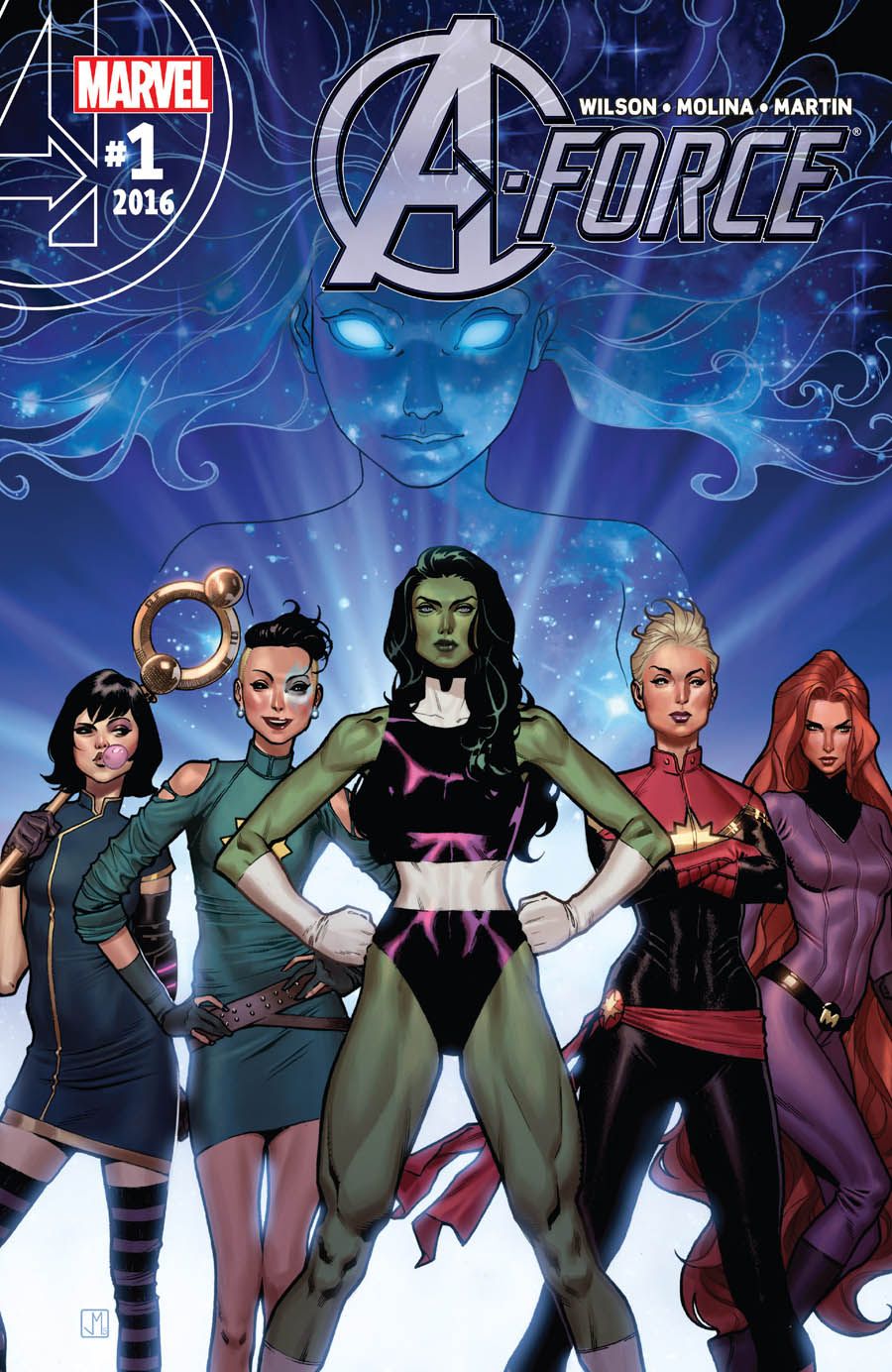Last year's "A-Force" #1 -- which introduced the female-led superhero realm of Arcadia and its protectors on Battleworld -- was an immediate critical success thanks to its great world-building. Though G. Willow Wilson, Jorge Molina and Laura Martin have reunited for an all-new "A-Force" series set in regular Marvel continuity, that same excitement is harder to generate this second time around.
"A-Force" #1 takes the one character created for the miniseries -- the ridiculously powerful and simultaneously naïve Singularity -- and plunges her into the mainstream Marvel Universe. As she tries to reunite with her friends from the original miniseries, though, she quickly learns no one else remembers the events of the original "A-Force," even as she discovers this universe is distinctly more complicated.
To be fair, Wilson's script inevitably had difficult path ahead of it, as this comic exists in the regular line of comics from Marvel. One of the big strengths of the original "A-Force" was how quickly she and co-writer Marguerite Bennett defined the world of Arcadia and made it feel different and exciting. By placing this in the same world as all the other comics at Marvel, it loses that edge because it has to play with the same setup/universe as the other titles. So, going into "A-Force" #1, one knows that it won't be the same.
That said, this new "A-Force" #1 isn't clicking, even when viewed in a vacuum. The biggest problem here is Singularity's narration. It's clearly meant to convey a sense of innocence and a lack of understanding that she's bounced from the "Secret Wars" universe into the regular Marvel Universe. The problem is that her character feels all over the place, with the narration not meshing with her dialogue or actions. When Singularity meets Captain Marvel, she's speaking almost in baby-talk or some sort of pidgin, with lines like, "Met. Fought. Helped. Friend." When compared to her opening narration -- "Birth is violence. Pain. Happiness. Sometimes they get mixed up. Sometimes you can't unmix them" -- it's hard to buy that this is the same character. With Singularity being the central character of "A-Force" #1, it's a problem that just festers and ultimately disrupts the reading process.
There are some nice bits in the script, though. The riff on Superman's origin is funny, especially the reason why a random couple isn't going to be the new Martha and Jonathan Kent. Singularity's foe Antimatter comes across as distinctly creepy as it snarls at her, advancing unstoppably. The way Medusa gets pulled into the mix is telegraphed perfectly earlier in the issue, and she then acts perfectly in character.
The art is strong from start to finish; Molina and Martin are the selling point for "A-Force" #1. Singularity looks great here, with her hair wafting up in defiance of gravity almost like a pompadour, and the starry pattern on her surface is just as entrancing on page 20 as it is on page 1. Antimatter serves as a good counterpoint to Singularity thanks to his visuals; the burning nature of his body and the fiery red color, coupled with his strange patterning, is instantly eye-catching. They're polar opposites, giving added weight to Antimatter's name and nature.
The other regulars look good here too. She-Hulk manages to appear formidable both physically and professionally; Molina has her fill out her suit in a manner that exudes strength with a general "don't mess with me in the courtroom" look and feel coming off it. Similarly, Captain Marvel is able to look confused and puzzled with the arrival of Singularity, but absolutely in her element and ready to do business when zooming through space to attack Antimatter. It's the visual depiction of that attitude that sells the moment.
Ultimately, I wish the narration from Singularity had been dropped entirely from "A-Force" #1. You can still understand what's going on without it, and the disparate clash of her thoughts and dialogue would have never happened. Hopefully, they will get smoothed out a bit in future issues, but -- for now -- this issue is only alright. In order to stand out as an ongoing series, the writing needs to step up to the plate a bit more.

